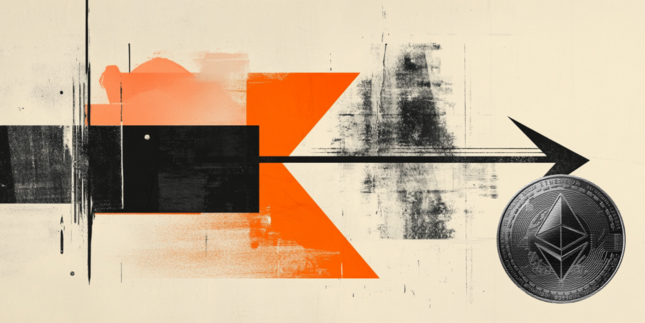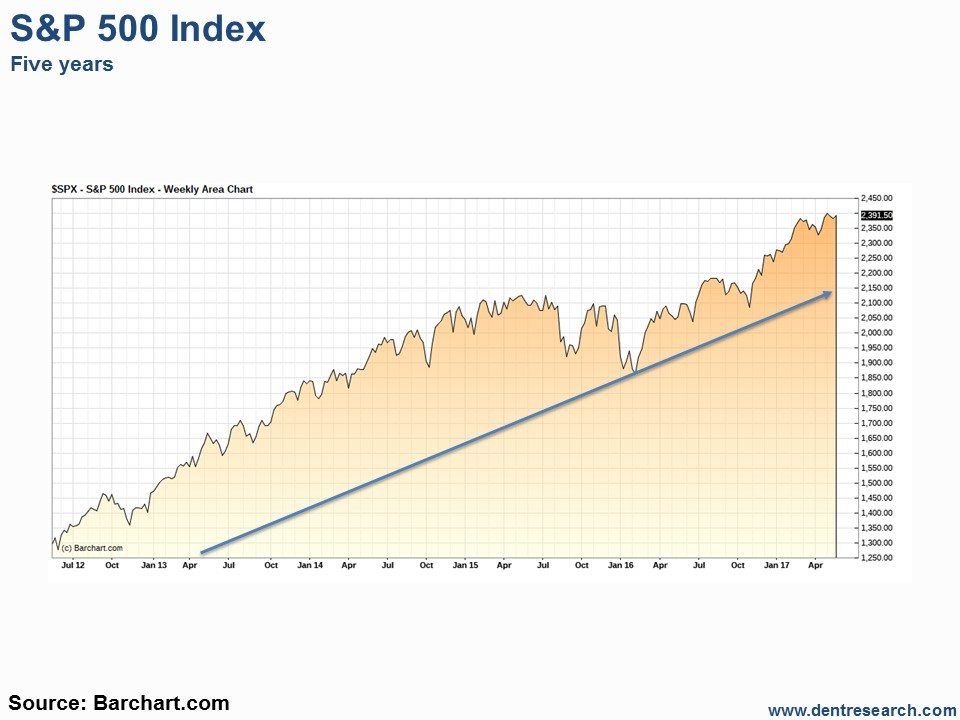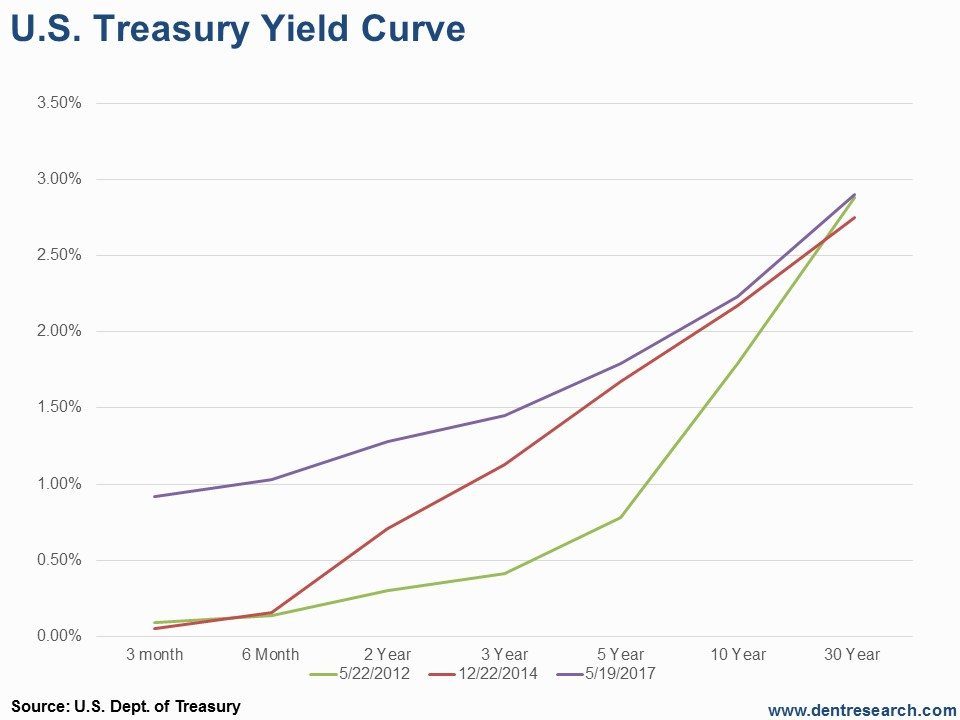Sometimes we get so caught up in what’s happened over the last few days, weeks, or months, we fail to see the bigger picture.
Perspective is key. Lose it, and you might as well give up on any long-term planning.
When we do take a longer view, we can avoid short-termism and make better investment decisions.
That requires serious discipline. But what if I told you there’s an easier way to appreciate the future of our economy, one that doesn’t include talking heads and iPhone news alerts?
There’s no perspective to be gained – on markets, investing, the economy, or anything, really – from your TV or your mobile device.
There is, however, a smart and simple way to see if the economy’s heating up or cooling down.
I’ll get to that in a minute…
First, let’s take a look at how stocks have performed over the last five years. Based on stock performance alone, you’d think our economy is firing on all cylinders, that maybe the Federal Reserve should be concerned, even, about an irrationally exuberant economy.
I mean, just look at the S&P 500 Index.
Pretty straight forward, right? I mean, we’re sitting close to all-time highs!
Stocks can be pushed higher because of various factors, among them low interest rates, positive investor sentiment, good corporate earnings, stock buybacks, and the overall economic outlook.
That last factor is historically the most important. And if you’re at all familiar with the way the Fed rolls, you know it has an outsized impact on “the economic outlook.”
Through action (artificially low interest rates, quantitative easing) or even just talk (speech after speech from governor after governor downplaying recent data, for example), the Fed has been able to influence the countless decisions that determine the state of the economy.
But here’s the thing: For the past eight or so years, stocks have only needed the belief that the Fed would step in and save the day. That’s how warped the relationship between the Fed and markets has become.
The Fed ended its QE program (bond buying with money created out of thin air) two-and-a-half years ago. It’s even raised the benchmark federal funds rate three times since December 2008, from zero to 1.0%.
But the Fed’s still cautious about moving rates too high, too fast, as an aggressive tightening cycle could stall growth entirely. Whether Fed officials admit it in their public remarks or not, recent economic suggests we could be teetering on a pullback.
Let’s step back again and take a look at where long-term Treasury rates have moved over the past five years.
This image strongly suggests that every time the Fed has moved to tighten policy, long-term rates have fallen.
That’s the precise opposite of what the Fed intended.
Unlike stocks, there’s no clear trend in long-term interest rates. The only thing we can take away from the chart above is that the Fed might have some credibility issues.
And now, back to that reliable indicator of the future health of our economy. Take a look at the chart below.
The Treasury yield curve (or the difference between long-, medium-, and short-term rates) can tell us a lot about the outlook for our economy.
A steepening yield curve tells us future growth is expected to be higher. Longer-term rates are much higher than shorter-term rates because inflation is expected to get hotter along with the economy.
Five years ago, long-term interest rates were just about where they are now, and short-term rates were nearly as low as the overnight federal funds rate (that is to say, at zero).
At the end of 2014, when the Fed ended QE, short-term rates didn’t move much. But the middle of the yield curve moved higher. Again, long-term yields are nearly the same today as they were in 2014.
Finally, the current yield curve looks much flatter. Short-term yields moved higher, mirroring the Fed’s rate hikes, and the middle of the curve has drifted higher. But long-term rates are about where they were five years ago!
That’s not encouraging. Markets don’t believe there’s much risk of inflation or economic growth.
In other words, the market doesn’t believe the Fed… ouch!
It seems all the shenanigans of QE and the artificial suppression of interest rates to create inflation and jobs since 2008 have been a waste.
(Well, the Fed did create a $4.5 trillion balance sheet in the process. With friends like these…)
The more the Fed tries to “normalize” interest rates, the more pressure it puts on the economy. If and when it reduces the $4.5 trillion mess it created, even more pressure will be applied.
The data can tell us a lot about what’s going on, but, ultimately, we have to connect the dots. We need to figure out whether trends are developing or if the data is “transitory”… that’s the term the Fed has thrown around lately, when the data hasn’t fit with its projections.
If you’re looking for an indicator that sheds light on the overall economic environment, don’t look at stock market trends.
And please – please – don’t look at Fed projections!
Just take a look at what the yield curve is doing. If it’s flattening, there’s a potential slowdown or maybe even a recession ahead. If it’s steepening, we can all breathe easier.
The content of our articles is based on what we’ve learned as financial journalists. We do not offer personalized investment advice: you should not base investment decisions solely on what you read here. It’s your money and your responsibility. Our track record is based on hypothetical results and may not reflect the same results as actual trades. Likewise, past performance is no guarantee of future returns. Certain investments such as futures, options, and currency trading carry large potential rewards but also large potential risk. Don’t trade in these markets with money you can’t afford to lose. Delray Publishing LLC expressly forbids its writers from having a financial interest in their own securities or commodities recommendations to readers.
Recommended Content
Editors’ Picks

AUD/USD: Extra gains need to clear 0.6400
AUD/USD rose for the third day in a row, approaching the key 0.6400 resistance on the back of the acute pullback in the US Dollar amid mounting recession concerns and global trade war fear.

EUR/USD: Powell and the NFP will put the rally to the test
EUR/USD gathered extra steam and advanced to multi-month peaks near 1.1150, although the move fizzled out somewhat as the NA session drew to a close on Thursday.

Gold holds positive ground above $3,100, all eyes on US NFP data
Gold price recovers some lost ground to near $3,115 during the late American session on Thursday after facing some profit-taking in the previous session. Escalating concerns over a global trade war and ongoing geopolitical risks boost the Gold price, a traditional safe-haven asset.

Ethereum: Short-term holders may not impact ETH's price, Pectra mainnet upgrade set for May 7
Ethereum declined by 3% on Thursday as market participants continued to react to President Donald Trump's announcements regarding reciprocal tariffs. However, the selling pressure may not persist since most ETH short-term holders already sold their assets in March.

Trump’s “Liberation Day” tariffs on the way
United States (US) President Donald Trump’s self-styled “Liberation Day” has finally arrived. After four straight failures to kick off Donald Trump’s “day one” tariffs that were supposed to be implemented when President Trump assumed office 72 days ago, Trump’s team is slated to finally unveil a sweeping, lopsided package of “reciprocal” tariffs.

The Best brokers to trade EUR/USD
SPONSORED Discover the top brokers for trading EUR/USD in 2025. Our list features brokers with competitive spreads, fast execution, and powerful platforms. Whether you're a beginner or an expert, find the right partner to navigate the dynamic Forex market.


